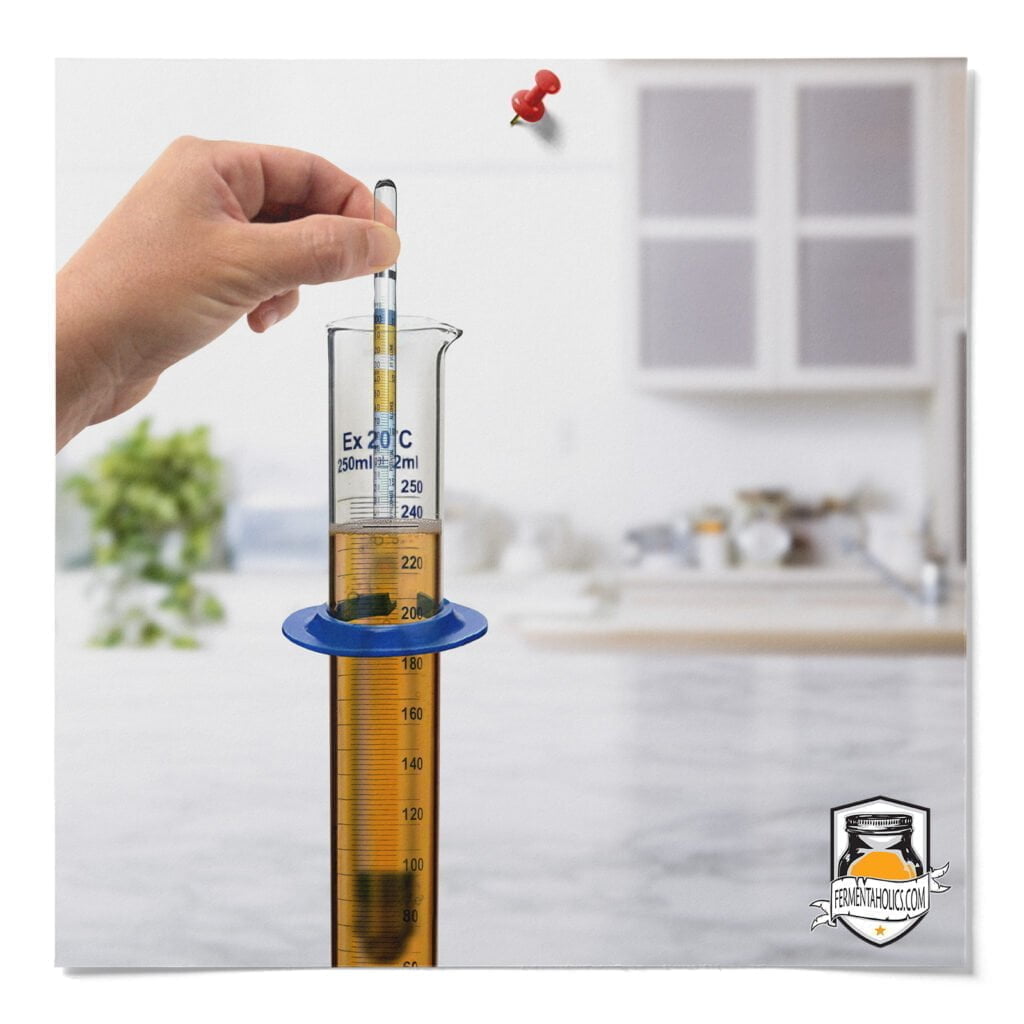
In brewing and fermentation, specific gravity is a measurement used for the density, or weight, of a liquid compared to water. Simply put, specific gravity tells us the weight of a liquid compared to water. And in fermentation, the additional weight in the water is mostly dissolved sugar.
Specific Gravity is a standard scale or measurement used in brewing and winemaking; other scales include Brix, Plato, and Potential ABV. No matter which scale you use, they provide the same information in different formats, much like a thermometer that reads in Celsius and Fahrenheit. The temperature remains the same, but it’s shown in two different scales.

Specific gravity is useful in fermentation because this measurement helps us determine the sugar content of a liquid at the test point, which can be taken before, during, and after fermentation. In addition to measuring sugar content, specific gravity readings are also used to measure alcohol content and gauge fermentation’s progression, which can help identify stuck ferments and confirm when fermentation is complete.
Perhaps the easiest way to understand the concept of specific gravity is to look at the readings themselves. Pure water has a specific gravity of 1.000. So a specific gravity reading greater than 1.000 means the liquid is heavier or denser than water, and a reading lower than 1.000 means the fluid is lighter than water.
In fermentation, the specific gravity scale used ranges from 0.985-1.160. So we know that pure water has a specific gravity reading of 1.000. From here, if you started dissolving sugars into the water, it would become heavier/denser; think water vs. syrup. As you add sugar to the water, the sugar will increase the liquid’s weight, which in turn increases the specific gravity of the liquid.
A specific gravity reading or a gravity reading in fermentation is a test that tells us the amount of a substance dissolved in a liquid. In the world of fermentation, this is predominately sugar.
Again and simply put, specific gravity tells us the amount of dissolved sugar in a liquid on a scale. Specific gravity is measured by taking a gravity reading. There are several methods used to take gravity readings, but the most common is with a hydrometer or refractometer.
A hydrometer is a tool used to measure specific gravity using buoyancy to determine the density of a liquid. Using the tool is simple: fill a test jar with your liquid and slowly lower the hydrometer into the jar. The hydrometer will float in the liquid and the point at the surface where air and the liquid meet will indicate the specific gravity. For a more detailed explanation, see complete instructions in our article, What is a Hydrometer?
A refractometer is another tool used to measure specific gravity and provide accurate measurements quickly. Refractometers, as pictured, are portable and easy to use and only require a small amount of liquid for a test.
Refractometers work by shining light through the liquid and then measuring the light as it passes through. The amount of light “refracted” or bent is directly related to the density of the liquid. An easy way to understand this, for example, would be shining a light through water, then a pint of beer. The amount of light blocked is used to determine the density of the liquid.